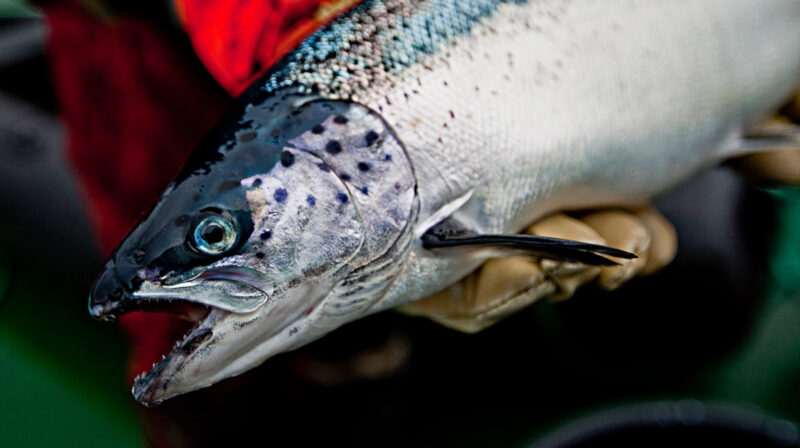Salmon farmers want your input for a better output
Public comment period launched for Canada’s first ever code-of-care for fish, that aims to help salmon farmers demonstrate high animal welfare standards at all times
By SeaWestNews
Salmon farmers in Canada want to hear from you about how they can better care for the fish they grow.
“Fish welfare is among top priorities for Canadian salmon, trout, and charr farmers,” said Tim Kennedy, president and chief executive of the Canadian Aquaculture Industry Alliance (CAIA), as his group and the the National Farm Animal Care Council (NFACC) launched a public comment period for the draft Code of Practice for the Care and Handling of Farmed Salmonids.
“This new Code of Practice will provide farmers a recognized framework to demonstrate their commitment to maintaining high welfare standards at all times,” he said.
The public comment period allows stakeholders – producers, consumers, and others with an interest in the welfare of farmed salmonids (salmon, trout, charr) – to view the draft Code and provide input to inform the final Code.
Codes of Practice for the care and handling of farm animals are the result of a unique consensus-based, multi-stakeholder approach used across various agricultural sectors, which brings together all relevant stakeholders with an interest in animal care standards.
The draft Code and the public comment system are now accessible via NFACC’s website
The public comment period closes January 7, 2021. The Code Development Committee will consider the submitted comments after the close of the comment period, and the final farmed salmonids Code of Practice will be released in the fall of 2021.
A Scientific Committee report summarizing research conclusions on priority welfare topics can be found online alongside the draft Code. This peer-reviewed report aided the discussions of the Code Development Committee as it prepared the draft Code of Practice. The report, developed by scientists familiar with fish welfare, should be reviewed prior to making a submission.
“The Code Development Committee has worked hard for nearly two years developing the draft Code. The public comment period is a key step that will allow us to check our work with a broader representative group,” said Dr. Barry Milligan, a veterinarian who has held senior roles in both salmonid production and fish health.
“Welfare is an integral component of fish health and one that is increasingly being looked at both from the industry and from the public perspective,” said Dr.Milligan, who also serves as the Chair of the Code Development Committee.
“We’re very proud to be developing the first Code of Practice for farmed salmonids in Canada,” said Arlen Taylor, Code Development Committee member and owner of a second-generation family business that operates five rainbow trout hatcheries in Ontario.
“This Code will be a valuable resource for large and small farms alike. As a living document, it will allow us all to improve our practices while continuing to innovate for the future betterment of animal care,” he said.
Once finalized, the new Code will promote sound management and welfare practices through recommendations and requirements for rearing units, feeding, transportation, and other animal husbandry practices.
“The Code development process helps diverse communities work together to improve the lives of farmed animals,” said Leigh Gaffney, who represents World Animal Protection Canada on the Code Committee.
“We hope to receive broad input from the general public, industry and other stakeholders to ensure this Code improves fish welfare and reflects the values of Canadians.”
The Code’s development is led by a 14-person Code Development Committee that includes participants from across Canada including producers, animal welfare and enforcement representatives, researchers, veterinarians, and government representatives.
The farmed salmonids Code is one of four Codes of Practice being developed as part of a multi-year NFACC project. Codes of Practice serve as a national understanding of animal care requirements and recommended practices. It is important that Codes be scientifically informed, implementable by producers, and reflect societal expectations for responsible farm animal care. The Codes cover housing, feed and water, handling, euthanasia, transport, and other important management practices.
Aquaculture, primarily salmon farming, accounts for 16% of Canada’s total seafood production employing 26,000 full time workers and generating $1.2 billion in labour income.
Canadian provinces have the primary responsibility for protecting the welfare of animals, including farm animals and pets.
All provinces and territories have laws in respect to animal welfare. Provincial and territorial legislation tend to be general in scope, covering a wide range of animal welfare interests. Some provinces and territories have regulations that govern specific aspects of animal welfare, or are related to certain species.
(image courtesy of Cermaq)

